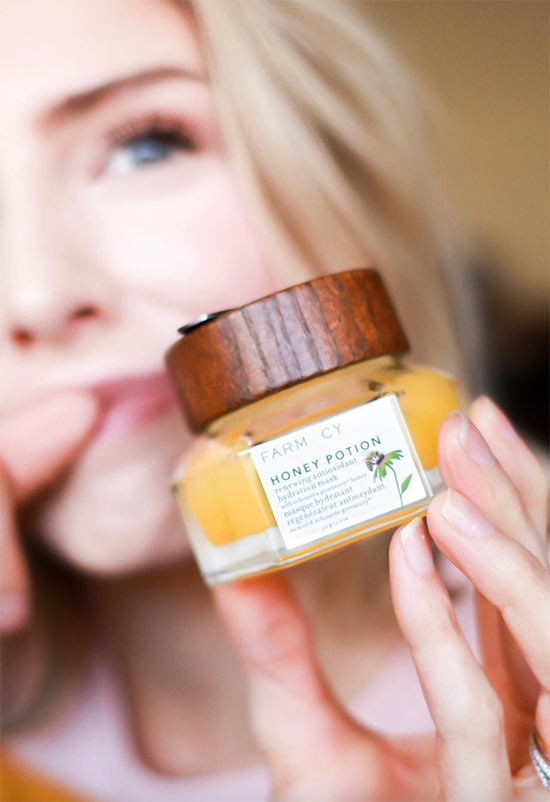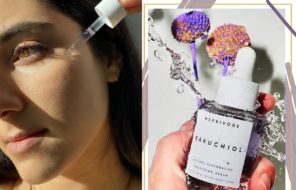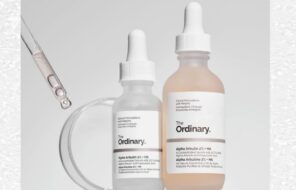I’m about to let all of you in on my biggest secret: glycerin for skin. Lots of fancy ingredients have come and gone, but glycerin has been the one staple in my skincare routine. It is a cheap, dependable ingredient that I simply cannot live without.
When I mention all of the glycerin uses I’ve discovered over the years, someone will always make a joke about explosives; while it is true that this ingredient is necessary for creating nitroglycerin, most of its uses are actually quite innocuous. According to the Cosmetics Ingredient Review, glycerin is the 3rd most ubiquitous ingredient in cosmetics!
We go on to explain exactly what glycerin is, and how it works in skin care. I break down all of the glycerin skin benefits, and explain how it works for different skin types. I make sure to dispel any concerns you may have about glycerin side effects, and finish off with an explanation about the various glycerin uses for skin.
In this article:
- What Is Glycerin?
- Glycerin Skin Benefits
- What Skin Types Can Benefit from Glycerin?
- Possible Glycerin Side Effects on Skin
- All the Glycerin Uses in Skin Care
What Is Glycerin and What Does It Do to Skin?
Glycerin, which you sometimes will also see come up as glycerol, is a humectant, which happens to be my favorite category of moisturizer ingredients. On the molecular level, glycerin is a polyol, meaning that it is a very simple compound comprised of three hydroxyl groups. This kind of formation means that glycerin is not just soluble in water, but it also has a very high affinity for it.
Glycerin is “hygroscopic”, which means it is able to attract and hold water molecules. Physically, glycerin is a clear, colorless liquid with a fairly thick texture and a sweet taste. It is wholly inoffensive, which is why it is such a lovely addition in skincare formulations.
Glycerin is also used in baking and commercial food products (especially sweets), in liquids for e-cigarettes and vaporizers, and in various healthcare applications.
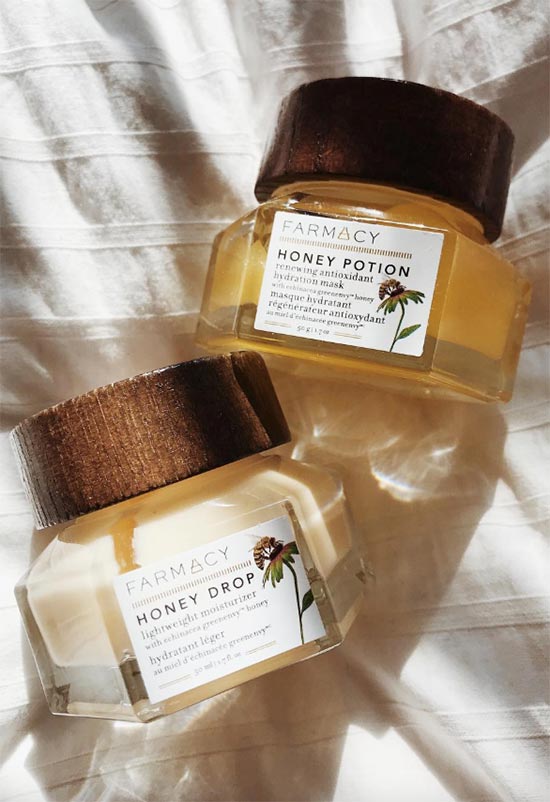
The glycerin used in skin care is usually derived from plant oils, although it can also come from animal oils. Glycerin is the “glyceride” part in triglycerides, with the other part being fatty acids. Triglycerides are the main constituents in oil, including the oil that makes up part of human sebum.
There are a few different processes oils can be put through in order to separate the glycerin from the fatty acids. One such process is saponification, when sodium hydroxide is added to oil. The fatty acids in the oil become saponified (i.e. they turn into soap), and the glycerin is separated.
Glycerin Skin Benefits
There are many reasons you’re going to think of adding glycerin to your skincare routine, and all of them are discussed below.
Super Hydrating
The most important glycerin skin benefit is its ability to attract water to the skin. When our skin is dehydrated, it simply doesn’t act as a good barrier. It doesn’t look good, it doesn’t feel good, and it becomes much easier to damage.
That is why an ingredient like glycerin, which counters hydration by pulling water into the skin, is so useful. It instantly plumps up the skin, making it look and feel smoother, softer, and stronger.
Glycerin also helps further water evaporation from the skin once it has been applied, so it really does help to keep the skin moist in the long term.

Instantly Beautifying
You know those times when your skin just looks kind of “blegh”? Usually that uninspiring appearance is caused by simple dehydration. I’m talking about those times when the skin looks dull, overly matte, and kind of lifeless; fine lines might look just a little bit deeper and the area under the eyes will sag a hint more than usual.
Injecting a dose of moisture into the stratum corneum (the top layer of skin) is all it usually takes to instantly fill in the gaps and plump up the skin so it looks instantly brighter, smoother, and happier. Glycerin is the perfect ingredient for the job, especially when it comes in a formula that also contains some water and a touch of oil.
Promotes Healing
As anyone with sensitive or irritated skin can attest, dryness can only exacerbate things. If your skin is feeling raw and needs some love, glycerin is guaranteed to help, as proven by a study published in the Journal of the European Academy of Dermatology. The hydrating effect of glycerin improves skin functioning, promotes skin healing, and helps to calm irritation.
Skin Cell Regulating
According to a study published in the Investigative Journal of Dermatology in 2003, glycerin is able to direct skin cells through their stages of maturation, and ensure they do so regularly. When skin (albeit in mouse models) lacks glycerin, it can become coarse and thick, but adding glycerin topically helped to regulate things and contribute to normal skin functioning.
While the research wasn’t conclusive, it does make it clear that glycerin might hold more benefits to the skin than just hydration.
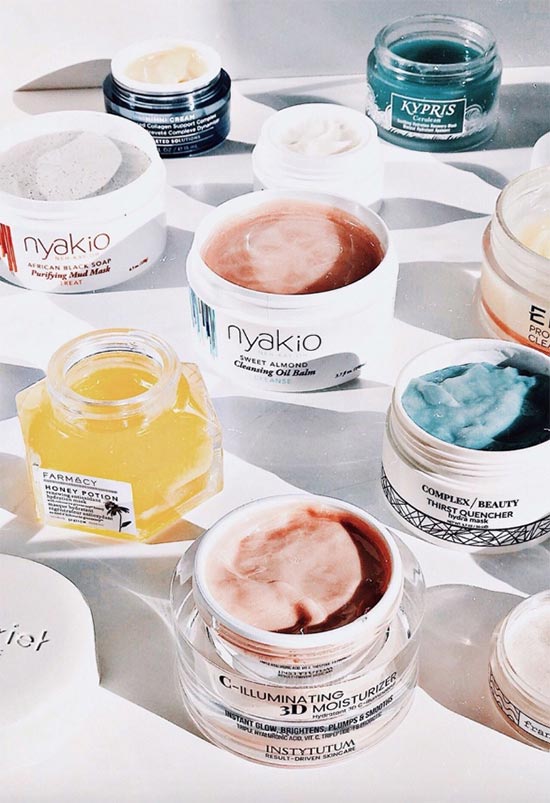
What Skin Types Can Benefit from Glycerin?
From the driest skin to the oiliest, just about every skin type will benefit from using glycerin for skin!
Since glycerin is so beneficial to both dry and oily skin types, it also follows that it’ll be excellent for anyone in between. No matter your skin type you should definitely be on the lookout for skincare products with glycerin!
Glycerin for Dry Skin
On one side of the spectrum we have dry skin, meaning skin that doesn’t produce a lot of oil and tends to have smaller, less visible pores. The oil our skin produces is somewhat occlusive, so it doesn’t allow moisture to escape from our skin.
When the skin doesn’t produce a lot of oil, then it also becomes dehydrated much more easily. By attracting moisture back into the skin, glycerin can prevent that dehydration and leave dry skin looking and feeling much healthier.
However, it is important that those with dry skin use glycerin skincare products that also contain occlusive and emollient oils, in order to counter the initial issue of lack of natural oils in the skin.
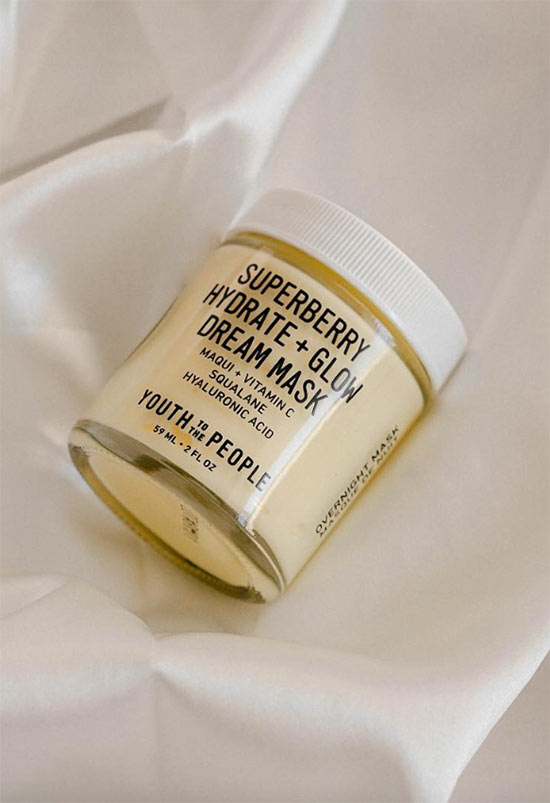
Glycerin for Oily Skin
On the other side of the spectrum we have those with oily skin. Oily skin produces a lot of oil throughout the day. Pores tend to be larger and they can get easily clogged so those with oily skin often suffer from acne as well.
Oily skin doesn’t get easily dehydrated naturally, and yet, dehydration is often an issue for those with oily skin. This is because folks with oily skin will often try to counter the oiliness with harsh skincare products – stripping cleansers and dehydrating astringents, in particular.
In other cases, the best ingredients for treating clogged pores and acne, like salicylic acid or benzoyl peroxide, also have a skin-drying or dehydrating effect, at least in the formulas they come in. It is important that those with oily skin restore that moisture, but of course they want to do it in a way that won’t exacerbate any oiliness in their skin.
That is why glycerin is such an incredible ingredient for oily skin: it restores hydration and moisture without being oily or greasy. Glycerin doesn’t clog the pores and it absorbs into the skin quickly so it doesn’t leave an oily cast.
If your skin is very oily and you aren’t using any harsh or stripping skincare products, then you can definitely opt for oil-free glycerin skincare ingredients like toners or essences. If you do use harsher skincare products, then you can choose skin products that contain glycerin along with a light oil that doesn’t cause breakouts like sunflower oil, grape seed oil, or rosehip seed oil.
Possible Glycerin Side Effects on Skin
The reason why I love glycerin so much is because it’s so simple – simple enough that it won’t cause breakouts or irritate sensitive skin.
When used on its own, glycerin has a slight warming effect which some people occasionally mistake for irritation. However, this is not the case. What is actually happening is that as the glycerin bonds with the moisture in the skin it begins to heat up a little bit, which is perfectly safe and normal. I usually mix glycerin with a bit of cold water before using it, in order to mitigate the exothermic reaction.
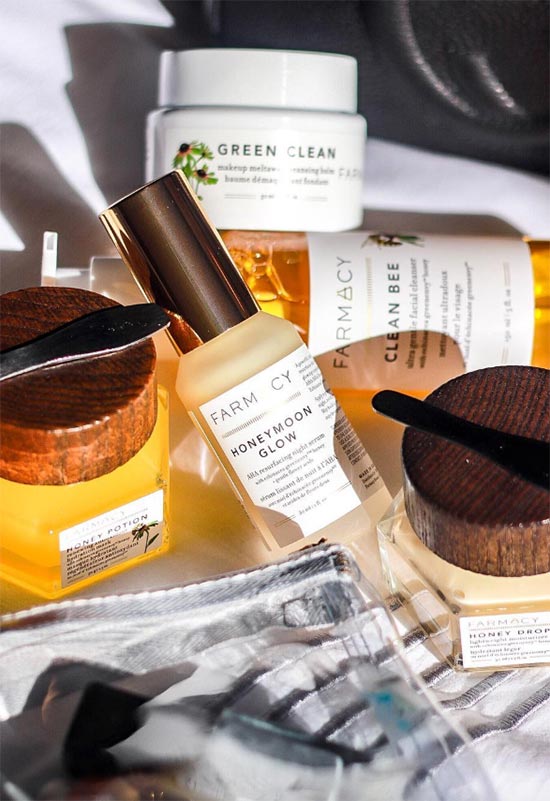
If you happen to live in a very dry climate you might want to avoid using products that include overly high amounts of glycerin. While you can still use moisturizers that contain glycerin, water, and occlusives, serums that are primarily made of glycerin might have an adverse effect on your skin.
This might occur because the air lacks moisture for glycerin to absorb, so it might pull moisture from lower levels of the skin instead. While this effect has only been hypothesized rather than proven, it is undeniable that glycerin functions better in comprehensive formulas like the ones we’ve listed earlier in the article.
Since glycerin shows up in most moisturizing skincare preparations, chances are you have already used it, but even so, when trying out new skincare products, first take a few days to patch test them on your inner arm to make sure that you won’t have a negative reaction.
Allergic reactions to glycerin are extremely rare, though not unheard of. If you are allergic to glycerin you will likely notice a reaction quite quickly, as those who are allergic to glycerin will develop skin irritation in the form of hives. The reaction will normally disappear within a few hours to a few days after the skin has been cleaned.
All the Glycerin Uses in Skin Care
As you have noticed from our list of the best glycerin skin products, it appears in a variety of products, from moisturizers to toners to cleansers. Find all the glycerin uses in skin care before you pick your favorite product!
Glycerin Moisturizers
As a humectant, glycerin is an important ingredient that shows up in almost all moisturizers. It ensures that moisturizers will hydrate the skin well by pulling water into the skin.
However, on its own glycerin is not a great moisturizer because it lacks the emollient and occlusive properties that other moisturizing ingredients provide. This is why you want to choose moisturizers that include skin-softening oils along with the hydrating glycerin.
If you find that your moisturizer isn’t hydrating enough, you can add a few drops of store-bought glycerin to it before applying to your skin.
Glycerin Hydrating Masks
Much in the same way that glycerin works in moisturizers, it works similarly in hydrating masks, including overnight masks. These masks can be especially nice to use in the shower, when all of the moisture and steam in the air can readily penetrate into the skin with the aid of the glycerin.
Glycerin Cleansers
On its own glycerin is not a cleansing ingredient, despite what some flawed sources might say. Even so, there are still many benefits to having glycerin in a cleanser.
Cleansers often dehydrate the skin, especially if they are surfactant-based, so having glycerin in a cleanser can help mitigate that effect and leave the skin a little softer and healthier after it’s been cleansed. That being said, even if your cleanser contains glycerin, that doesn’t mean that you can skip moisturizing your skin.
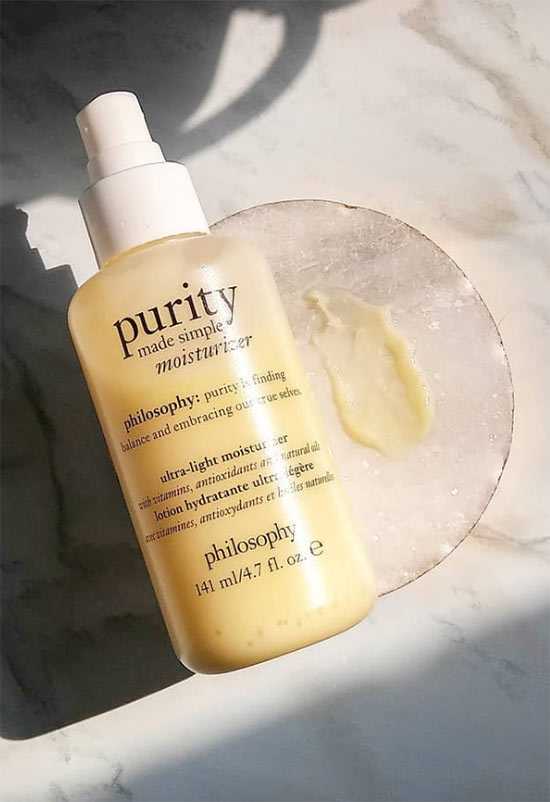
Glycerin Soaps
Soaps with glycerin are particularly interesting. Often, high-quality soaps will naturally contain glycerin. This is, of course, the glycerin that was separated from the oils that turn into soap during the saponification process.
In some instances, this glycerin will get separated from the soap and then sold commercially to other cosmetics companies, while in other instances the glycerin will remain in the soap and turn it into a much more moisturizing product.
While glycerin-laden soaps are much better for the skin than regular soaps, they should still not be used on the face since their pH will be too high and therefore disruptive to the skin.
Glycerin Toners and Serums
In toners and serums, glycerin can hydrate the skin much in the same way that it hydrates in moisturizers. The key difference, however, is that toners and serums have a thinner texture than moisturizers, and they usually don’t contain strong occlusives.
Those with very oily skin might be able to use toners and serums with glycerin instead of moisturizers, but for most people these toners and serums will just give a hydration boost that will help but shouldn’t replace a moisturizer.
You can actually make your own hydrating glycerin-based toner by combining water and glycerin in a spray bottle. You can add some witch hazel if you would also like the formula to tighten your pores, or you can add rose water for a pleasant scent and added hydrating effect!
Photos via @mod.young, Instagram

